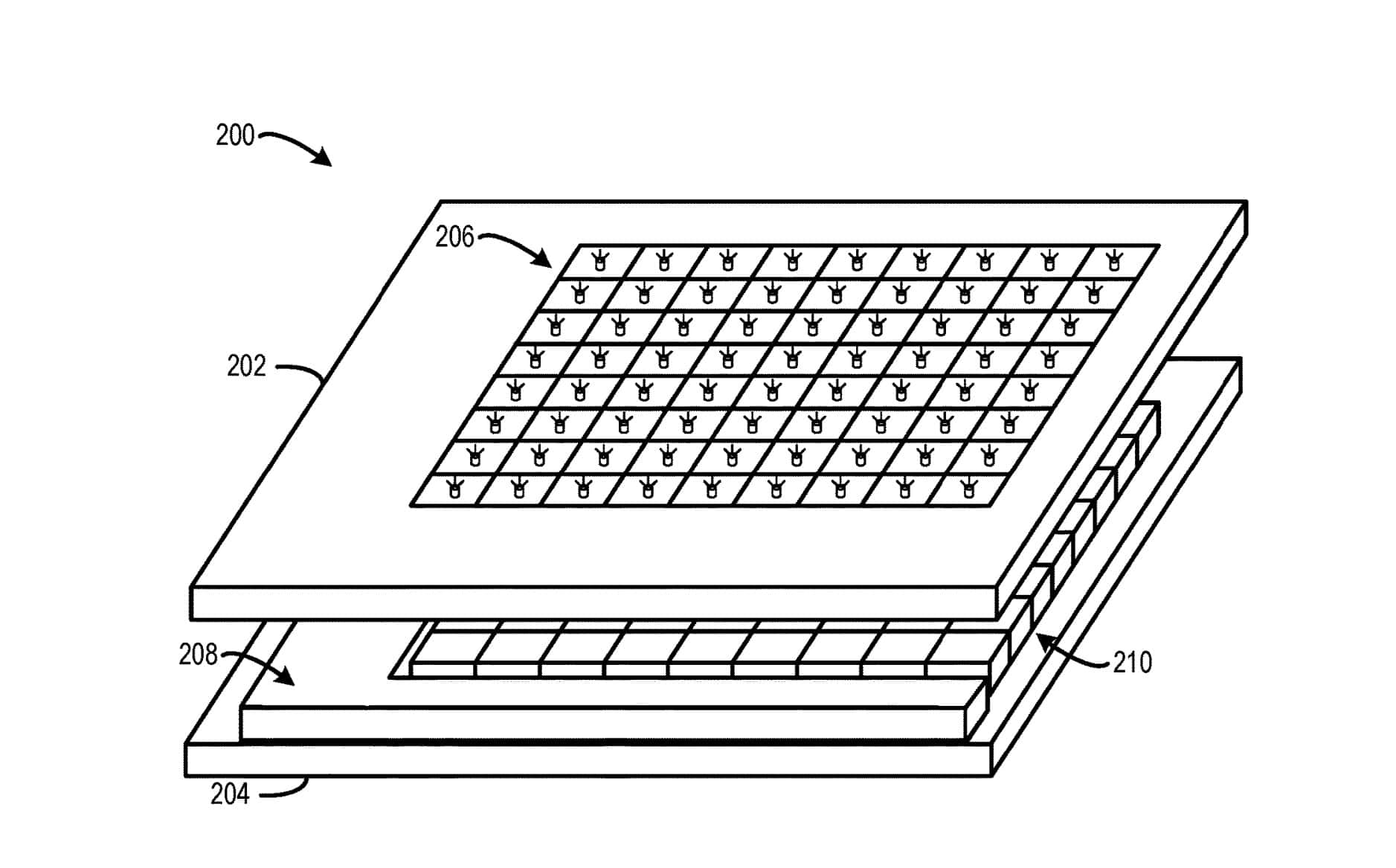Microsoft is actively working on micro-LED display tech for HoloLens-like headsets
3 min. read
Published on
Read our disclosure page to find out how can you help MSPoweruser sustain the editorial team Read more

Microsoft HoloLens 2 display is based on waveguides and light projectors. Users look through the waveguides—the lenses inside the visor and the laser light is used to illuminate the display. But waveguides display technology have several disadvantages including their size and the poor visual quality. Microsoft has been exploring micro-LED displays for quite some time now. Back in 2020, we reported about a Microsoft patent which proposes a micro-LED based display system to reduce the size of HoloLens form factor without compromising the display quality or user experience.
Microsoft has filed a new patent for a micro-LED display technology that can be used in Mixed Reality, Virtual Reality and Augmented Reality headsets. This patent is a follow-up to the US11688333B1 patent, which was filed in 2021. The intriguing part is that this new patent was filed in June 2023. This suggests that Microsoft is actively developing micro-LED display tech, which will likely be featured in the next generation HoloLens device in the future.
A micro-LED display generally includes an array of microscopic light emitting diodes (micro-LEDs) to form individual display pixels. When compared to regular LCD displays, micro-LED displays can deliver higher brightness, lower latency, higher contrast ratio, greater color saturation, intrinsic self-illumination, and better efficiency.
Summary of Microsoft’s micro-LED display tech described in this patent:
- A micro-LED display device may include a display substrate and a backplane substrate.
- The display substrate includes an array of micro-LEDs forming individual pixels.
- The backplane substrate includes a plurality of pixel logic hardware modules. Each pixel logic hardware module includes a local memory element configured to store a multi-bit pixel intensity value of a corresponding micro-LED for an image frame.
- The backplane substrate is bonded to a backside of the display substrate such that the pixel logic hardware modules are physically aligned behind the array of micro-LEDs and each pixel logic hardware module is electrically connected to a micro-LED of the corresponding pixel.
Instead of regular peripheral arrangement, Microsoft’s new tech is positioning the pixel logic hardware modules in physical alignment behind the array of micro-LEDs which results in reducing the overall size of the display substrate and the backplane substrate.
Also, since the multi-bit pixel intensity values are stored locally in the local memory elements that are near to the micro-LEDs, the distance that a drive signal travels from a pixel logic hardware module to a micro-LED is reduced allowing us to control with a high-frequency modulation drive scheme. This will result in reduced flicker effects and blur and an increase in display resolution. Also, this allows us to encode pixel information such that more bits are concentrated in an area where the eye is more sensitive to changes in intensity.
Interestingly, this development aligns with the approach taken by Apple with its Vision Pro device. Apple’s Vision Pro uses micro-OLED technology to pack 23 million pixels into two displays. This technology offers higher brightness, lower latency, higher contrast ratio, greater color saturation, intrinsic self-illumination, and better efficiency.
The parallel advancements in micro-LED technology by both Microsoft and Apple validate the potential of this technology in shaping the future of AR/VR/MR devices. It will be exciting to see how these tech giants further innovate and push the boundaries of what’s possible with micro-LED displays.








User forum
1 messages